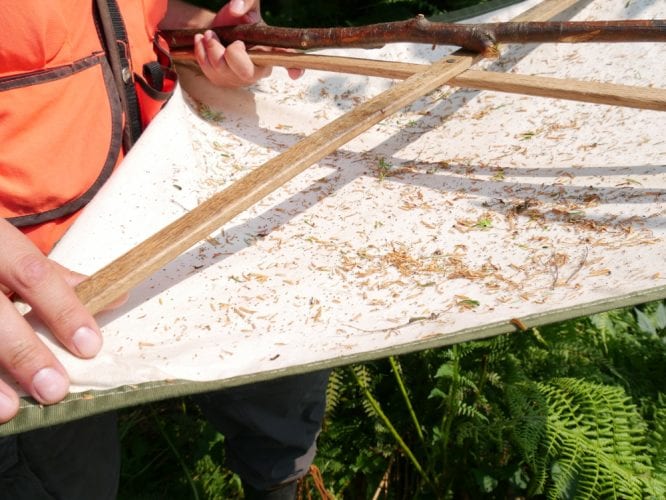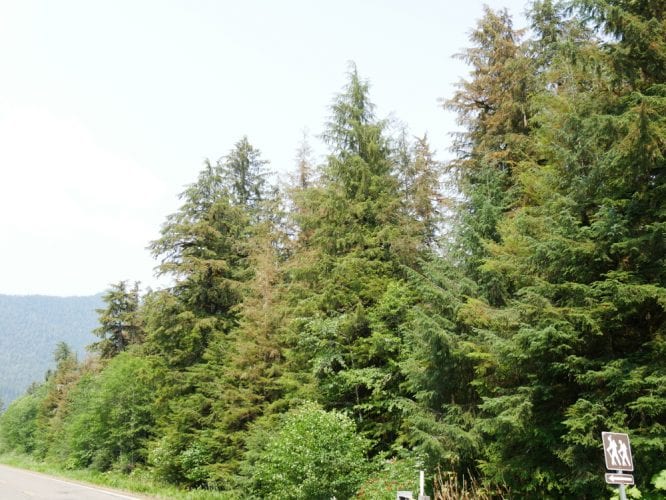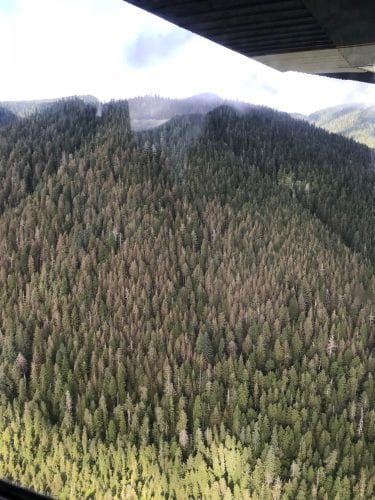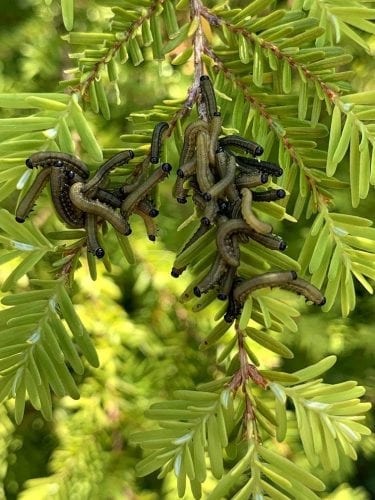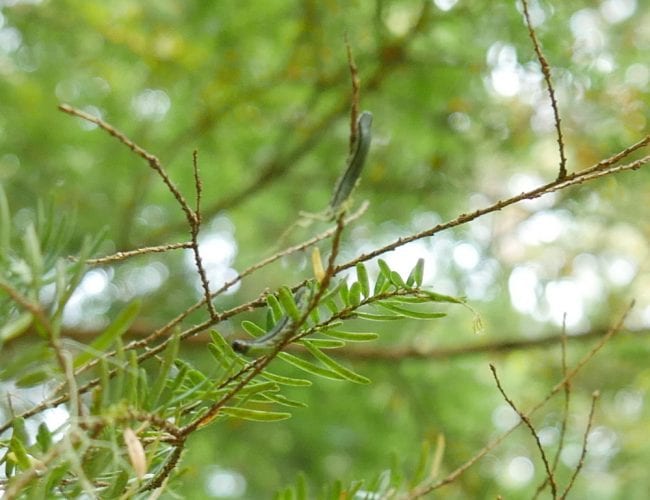
The U.S. Forest Service in Southeast Alaska is recording more wide-spread tree damage from a bug called a hemlock sawfly on the Tongass National Forest. For the second summer, these native, defoliating insects are leaving behind reddish brown tree tops, this year stretching from Prince of Wales Island to Juneau.
From afar, the most visible damage to hemlock trees is the brown needles, especially toward the top. But up close, there’s another widespread sign that sawflies are eating and digesting hemlock needles.
“It’s like, it’s the poop,” said Elizabeth Graham with a laugh. She’s an entomologist who works with the U.S. Forest Service in Juneau in a division called forest health protection. This bug poop has a fancier name, frass. It looks like light brown dirt and in places it’s covering everything in the forest. When the wind is still, you may even be able to hear it raining down from the forest canopy.
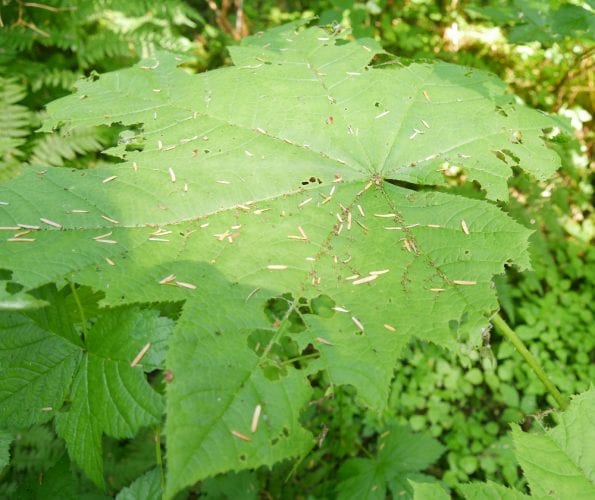
Graham and biological science technician Isaac Davis shake the branches of trees at Ohmer Creek on Mitkof Island south of Petersburg, catching hemlock needles and bugs in a square sheet.
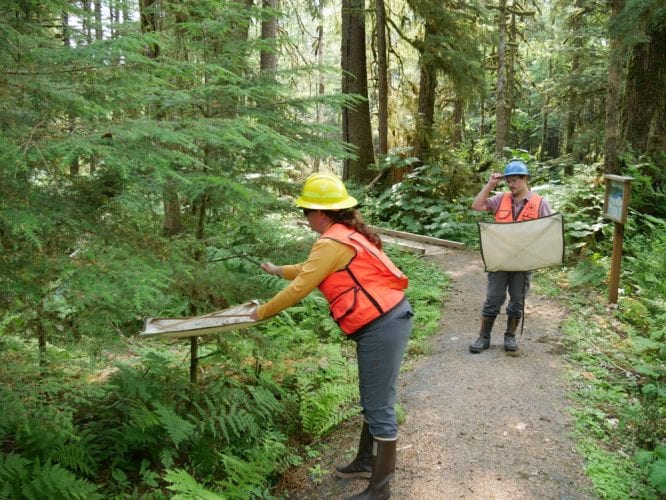
Graham was surveying some of these same areas a year ago. She’s been in the Ketchikan area and on Prince of Wales Island, Kupreanof and Mitkof Islands. Graham said it’s a more intense outbreak than last year.
“The damage is much more extensive than last year and we’re seeing it in some areas that we didn’t see it last year either,” she said. “So up in Juneau where we’re from we hardly saw any damage last year but there’s heavy defoliation this year.”
At this stage in their life, the young sawfly larvae look a little bit like a number of other small green inchworms or caterpillars you might find in the forest in the summer. They eat a portion of the older needles of hemlock trees and leave behind a brown, bare branch.
“They’re called wasteful feeders because they only eat halfway through the needle and then leave like a little rib kind of,” Graham said. “And so you’ll see this sort of discolored reddish, and that’s what we’re seeing in the crowns now and then eventually those are going to fall. And then they’re just going to look very thin crowns, there’s not going to be much inner foliage they’ll look kind of brown. And you know people may be concerned the trees are going to die. There may actually be some mortality. We are seeing some trees that are hit so hard that they may not be able to recover. Another thing that we see is heavy feeding at the top. And so that’ll result in top kill but the rest of the tree will survive.”
Some of the hemlock trees under attack are also being eaten by another insect, the western black-headed budworm. When both are eating needles, that can kill a tree. Surveying has turned up some budworm, but not a lot. Most of the damage this year can be blamed on the sawfly.
“So you see a little bit of tips on there that are kind of bent over,” Graham said pointing to a tree branch. “And so the budworm turns into a moth, whereas the sawflies turn into a small wasp.”
There are some benefits to these hard-eating insects. They open up the forest canopy helping shorter plants. Rodents, mammals and birds can feed on the bugs and the digested needles fall everywhere, recycling that material to the forest floor. The sawflies are always around, but they flourish in some years and their damage is much more visible. And Graham’s main message is that this outbreak happens on the forest from time to time.
“This is a native pest,” she said. “It’s a natural part of our forest. It’s not something that’s invasive and has never been here before. So there are natural controls that eventually will catch up.”
In fact, Graham’s survey of areas that were damaged last summer is turning up one of those natural controls. It’s a fungus that kills the young sawflies and can limit these outbreaks.
“So my thoughts are that areas that have been hit last year and then again this year, those populations are probably about to crash,” Graham said. “And so hopefully next year we won’t see as much activity but right now it’s in the thick of it.”
Wet weather can help that fungus and drive down insect numbers, so the ongoing drought could be playing a part in this outbreak, helping the sawfly numbers to boom. More ground surveys were also planned around Wrangell and Zarembo islands along with aerial surveys later this summer to document the tree damage from above.
